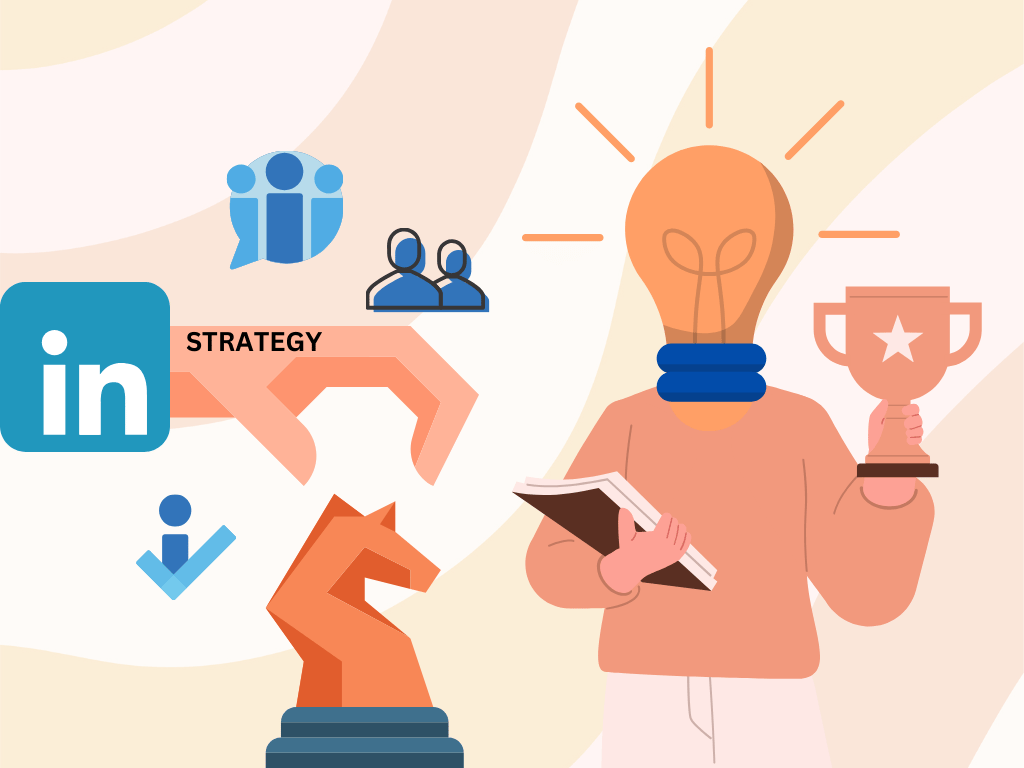
LinkedIn has evolved into a powerhouse for B2B marketing, offering businesses a platform to connect with professionals, establish authority, and generate leads. To harness its full potential, you need a well-crafted strategy. Here’s how to build a winning LinkedIn marketing strategy for your B2B business.
1. Define Your Objectives
Start by setting clear goals. Are you looking to increase brand awareness, drive website traffic, generate leads, or establish thought leadership? Your objectives will guide your entire strategy.
Pro Tip: Use SMART goals (Specific, Measurable, Achievable, Relevant, Time-bound) to track your progress effectively.
2. Optimize Your Company Page
Your LinkedIn Company Page is your brand’s online presence. Ensure it is professional, informative, and visually appealing.
- Profile Picture and Banner: Use a high-quality logo and a banner image that reflects your brand identity.
- About Section: Craft a compelling description that highlights your unique value proposition.
- Call-to-Action (CTA): Include a clear CTA in your description to guide visitors to the next step.
- Showcase Pages: Create Showcase Pages for specific products, services, or campaigns to target niche audiences.
Pro Tip: Regularly update your page with fresh content to keep it relevant.
3. Identify and Understand Your Target Audience
Define your ideal customer profile (ICP) based on industry, company size, job title, location, and pain points. LinkedIn’s advanced targeting tools make it easier to reach the right audience.
Pro Tip: Use LinkedIn’s Audience Insights to analyze your followers and tailor your content.
4. Develop a Content Strategy
Content is the cornerstone of LinkedIn marketing. Focus on creating valuable, engaging, and shareable content tailored to your audience.
- Types of Content: Share articles, case studies, infographics, videos, and thought leadership posts.
- Posting Frequency: Aim for at least 3-5 posts per week to maintain visibility.
- Engagement: Encourage conversations by asking questions, responding to comments, and tagging relevant people or companies.
Pro Tip: Use LinkedIn’s native tools like polls and live events to boost engagement.
5. Leverage LinkedIn Ads
LinkedIn’s advertising platform offers advanced targeting options that are perfect for B2B businesses. Use ads to amplify your reach and drive specific actions.
- Sponsored Content: Promote your posts to reach a larger audience.
- Message Ads: Send direct messages to prospects for personalized communication.
- Lead Gen Forms: Capture leads directly on LinkedIn without requiring users to leave the platform.
Pro Tip: Test different ad formats and use A/B testing to optimize performance.
6. Build and Engage with Your Network
LinkedIn is a platform for networking. Actively connect with professionals in your industry and engage with their content.
- Personalize Connection Requests: Add a brief message explaining why you’re connecting.
- Engage Regularly: Comment on and share posts from your network to build relationships.
- Join Groups: Participate in LinkedIn Groups related to your industry to expand your reach.
Pro Tip: Use LinkedIn’s Sales Navigator to identify and engage with decision-makers.
7. Track and Analyze Performance
Measure the success of your LinkedIn marketing efforts by tracking key metrics like impressions, clicks, engagement rate, and leads.
- LinkedIn Analytics: Use LinkedIn’s built-in analytics to monitor the performance of your posts and page.
- Third-Party Tools: Tools like Hootsuite and Sprout Social provide additional insights.
- Iterate: Use data to refine your strategy and focus on what works best.
Pro Tip: Set monthly or quarterly reviews to evaluate progress and adjust your approach.
8. Collaborate with Employees and Influencers
Leverage the power of your team and industry influencers to extend your brand’s reach.
- Employee Advocacy: Encourage employees to share company updates and their own professional insights.
- Influencer Partnerships: Collaborate with LinkedIn influencers who align with your brand’s values.
Pro Tip: Provide employees with pre-approved content to make sharing easier.
